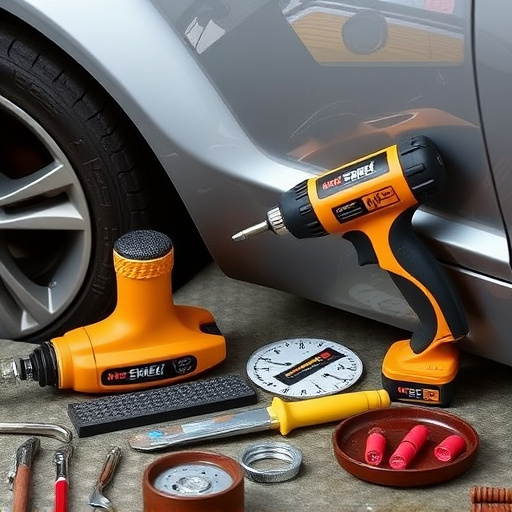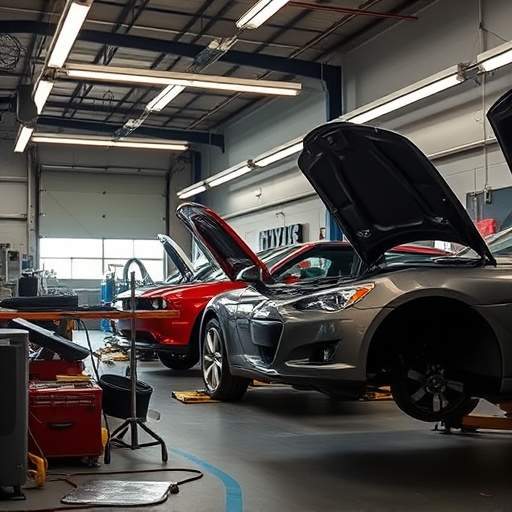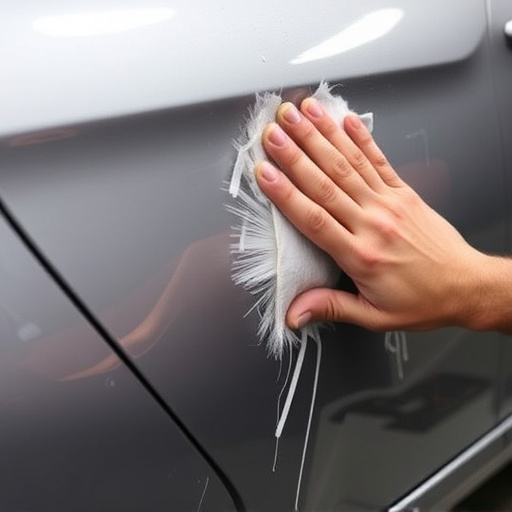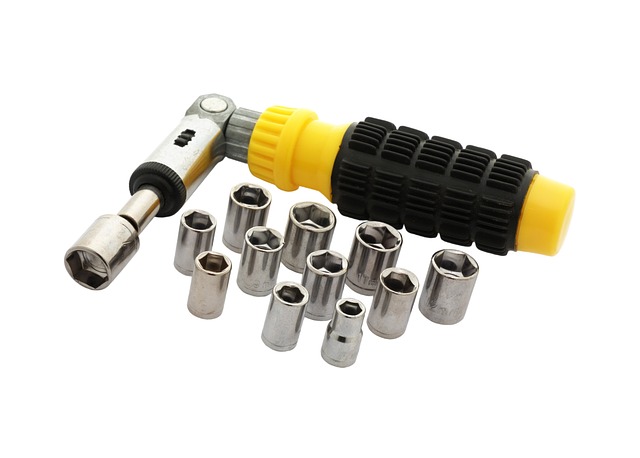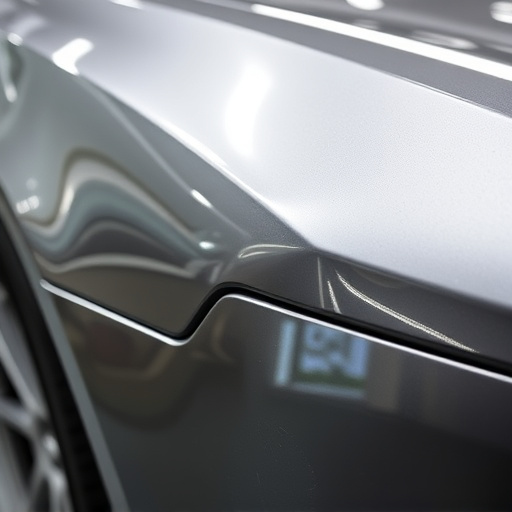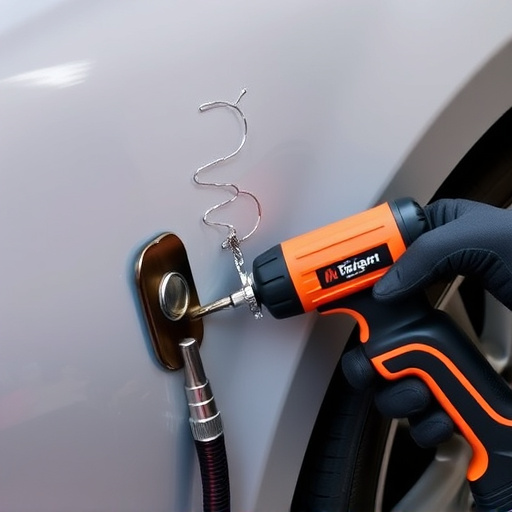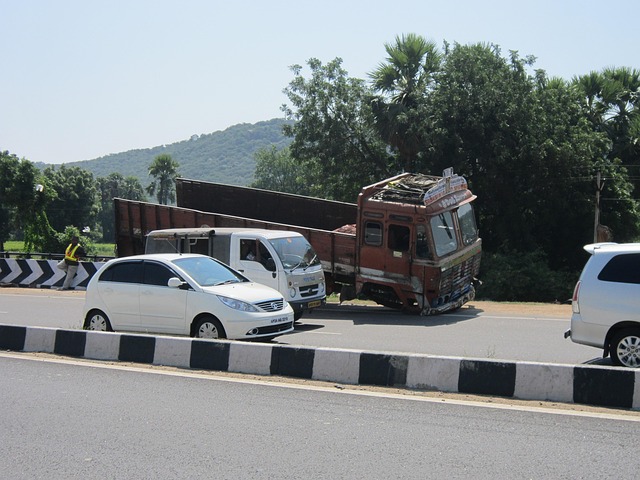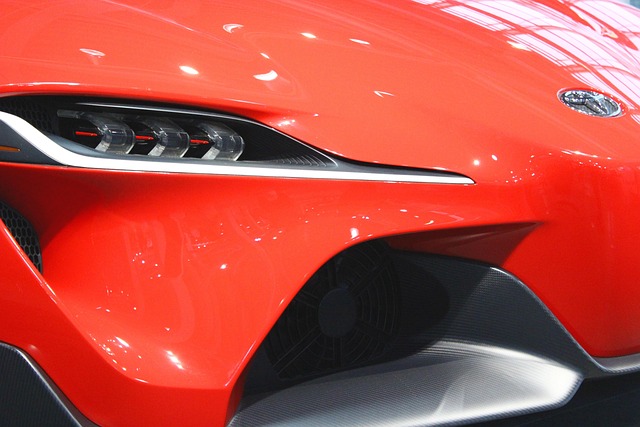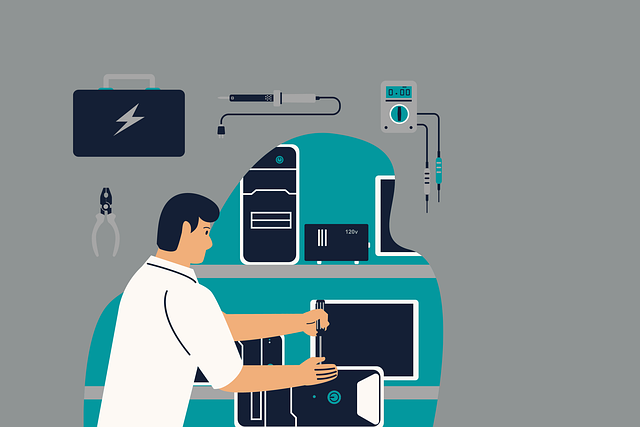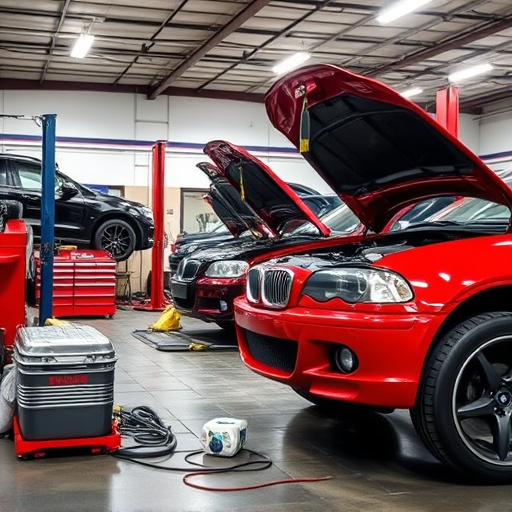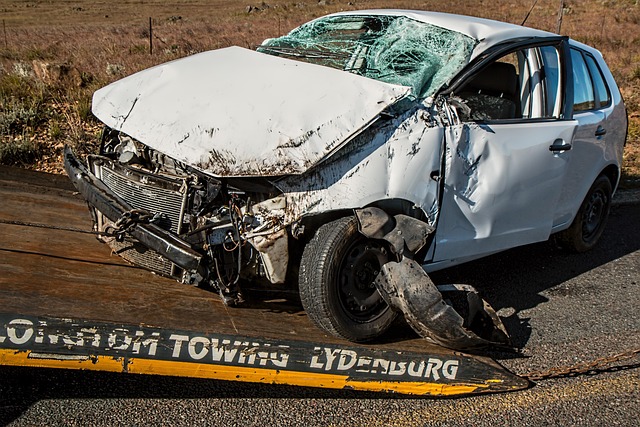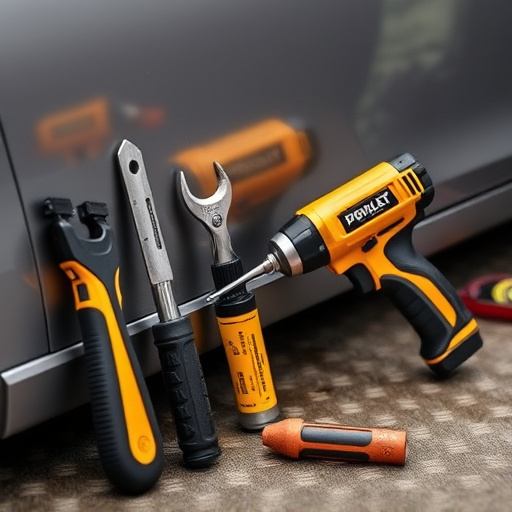Paintless Dent Repair (PDR) is revolutionizing auto body shop services by offering non-invasive, high-quality dent removal without traditional painting. Utilizing specialized tools and advanced technologies like digital image analysis and 3D scanning, PDR significantly boosts productivity and cost savings. By implementing robust workflows with meticulous planning, consistent protocols, technician training, and efficient digital tools, car body shops can offer quicker turnaround times, maintain customer satisfaction, and stay competitive in the PDR for body shops market.
In today’s competitive automotive industry, efficient Paint Damage Repair (PDR) processes are crucial for body shops aiming to thrive. This article delves into the key elements of effective PDR specifically tailored for body shops, exploring its purpose and benefits. We’ll guide you through essential tools, cutting-edge technologies, and strategies to build a comprehensive PDR workflow, ensuring top-notch service quality and customer satisfaction in the ever-evolving market of PDR for body shops.
- Understanding PDR: Its Purpose and Benefits for Body Shops
- Essential Tools and Technologies for Efficient PDR Practices
- Building a Comprehensive PDR Workflow: Strategies for Success
Understanding PDR: Its Purpose and Benefits for Body Shops

PDR, or Paintless Dent Repair, is a specialized technique revolutionizing the auto body shop industry. Its primary purpose is to restore vehicles’ original appearance by removing dents and scratches from their surfaces without the need for traditional painting methods. This non-invasive approach offers numerous benefits for body shops catering to both minor and major automotive damage.
For body shops, PDR is a game-changer when it comes to efficient auto maintenance. By utilizing advanced tools and techniques, technicians can swiftly address various dents and creases, reducing the time and resources required compared to conventional paint repair. This not only enhances productivity but also contributes to cost savings while ensuring high-quality results, making it an attractive solution for modern vehicle paint repair.
Essential Tools and Technologies for Efficient PDR Practices

In the realm of PDR (Paintless Dent Repair) for body shops, efficient practices rely heavily on a robust set of tools and technologies. A well-equipped collision center or car body repair shop should invest in high-quality dent removal tools like specialized hammers, picks, and suction cups to facilitate precise auto frame repair. These tools enable technicians to access and treat dents from various angles without causing additional damage or leaving unsightly marks.
Furthermore, integrating digital technologies into PDR workflows enhances efficiency and accuracy. Modern systems offer features such as real-time image analysis and 3D scanning capabilities, which help in assessing damage and planning repairs. These innovations streamline the entire process, from initial inspection to final reconditioning, ensuring top-notch results for every car body repair project. By leveraging these essential tools and technologies, body shops can deliver faster turnaround times and maintain high standards of quality in their PDR services.
Building a Comprehensive PDR Workflow: Strategies for Success

Building a comprehensive PDR (Paintless Dent Repair) workflow is a game-changer for any car body shop, transforming it from a collision center to a hub of innovation and customer satisfaction. The key lies in strategic planning and adopting efficient strategies. First, establish clear protocols for each step of the PDR process, from initial assessment to final touch-ups. This ensures consistency and high-quality standards. Train your technicians extensively on the latest PDR techniques and tools, enabling them to handle a diverse range of dented panels with precision.
Implementing digital tools for documentation and communication can streamline operations. High-resolution imaging software allows for detailed before-and-after comparisons, while cloud-based platforms facilitate efficient project management and customer updates. By combining these strategies, your car body shop can offer faster turnaround times, maintain a satisfied customer base, and stay ahead in the competitive market of PDR for body shops.
Effective PDR (Pre-Damage Repair) in body shops is a game-changer, offering numerous benefits and streamlining operations. By understanding its purpose, investing in the right tools, and building a comprehensive workflow, body shops can enhance efficiency, reduce costs, and deliver superior customer satisfaction. Embracing PDR as a key element in their practices ensures a competitive edge in today’s automotive repair landscape.
